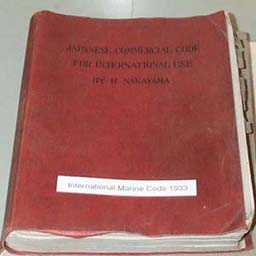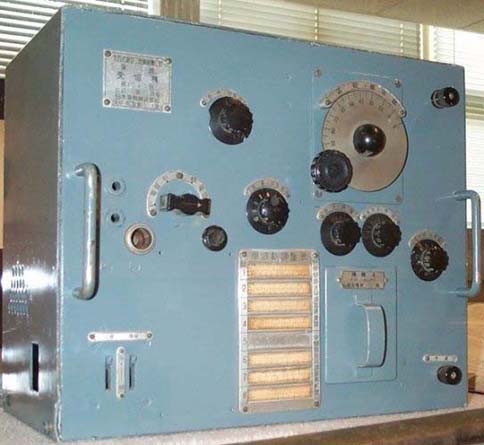![]()
The contents on this page remain on our website for informational purposes only.
Content on this page will not be reviewed or updated.
 |
||||||||
 |
||||||||
Japanese Cryptographic Machines |
||||||||
| In 1931 the Japanese experimented with a ciphering machine the Type No.91 but it was not adopted by the Navy which stayed with book codes. A modified version Type 91-A was supplied to the Japanese Foreign Office for use by its Ambassadors. This machine became known as the Red Machine. | ||||||||
|
|
||||||||
| In 1937 the alphabetic typewriter was used to encipher naval attache traffic.The U.S. called this the Purple Machine. Although the Japanese purchased the Enigma they chose to base their cipher machine on a different technology. Rather than use rotors the Japanese used telegraph exchange uniselectors.
To encipher a message the cipher clerk would consult the thick YU GO book of machine keys. The clerk plugged up 26 connecting wires to the key for the day, turned the 4 disks in the box to their position in YU GO & typed plain text. The alphabetic typewriter worked on roman letters not katakana & so could encipher English as well. However it could not encipher numerals or punctuation so the cipher clerk had to convert these to a 3-letter code word & encipher these. The internal wiring & plugboard produced a cipher of great complexity. |
||||||||
 |
||||||||
|
|
||||||||
| The task facing the cryptanalyst was to reconstruct the internal wirings & motions of the 4 uniselectors to determine the start positions & daily changes of the plugboard. American William Friedman achieved success after 20 months work in August 1940. He then built a logic equivalent of the alphabetic typewriter using Strowger uniselectors & called these Purple Machines. At the end of the war when an alphabetic typewriter was captured, the Americans found it was almost identical to their logical replica. 3 Purple Machines were brought to Bletchley Park in 1941. Later the Japanese devised another cipher machine - Coral - used exclusively by Japanese Naval Attaches. Not many were built, but as there was little traffic it was not broken until 1943. | ||||||||
|
Bletchley Park Main HomePage |
||||||||